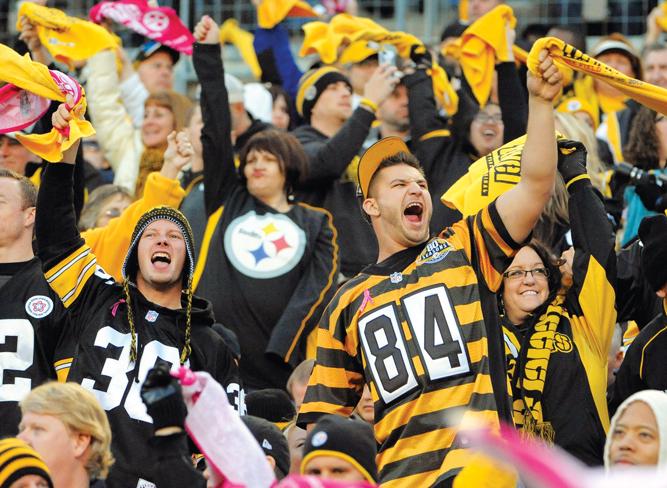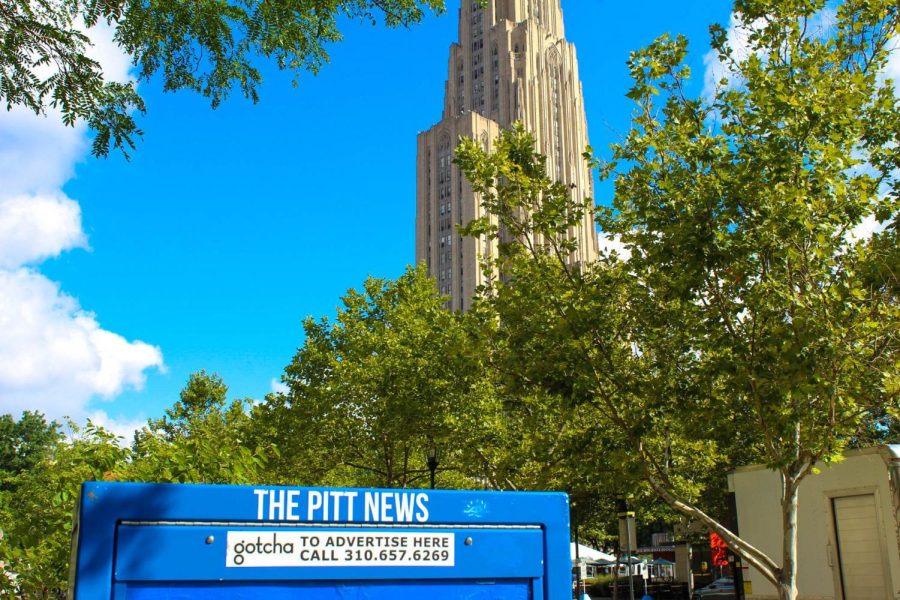For better or worse: Pittsburgh makes top ten lists
July 1, 2014
Pittsburgh may not be the largest city but it’s the city that has been cropping up on many “most likely” and “best of” lists.
Forbes data shows that since 2009, Pittsburgh’s population has steadily increased, and the median age of residents has decreased from 35 to 33, a trend that usually signals a city becoming more livable by young professionals. A younger city means mentions in trendy articles — as “listicles” have become a popular form of journalism, Pittsburgh nearly always manages to be named.
According to lists from recent years, Pittsburghers are loyal — to sports teams and schools, not spouses. Rankings also name Pittsburgh for having the worst air quality and being one of the best travel destinations in the country.
In 2013, the Huffington Post listed Pittsburgh as the fourth highest “cheating city” among married couples, with Washington, D.C., Houston, Texas, and Miami, Fla., holding higher percentages.
The data was compiled by Ashleymadison.com, a website that connects people looking for affairs.
To determine which cities made the “most likely to cheat” list, Ashleymadison.com derived a ratio of members on its site to total population from each neighborhood, according to Ashley Carr, public relations coordinator for Ashleymadison.com.
In Pittsburgh, the Brighton Heights and Franklin Park neighborhoods held the highest percentages, with Shadyside not far behind.
According to Carr, areas that are “financially well-off” are more likely to be ranked on the list.
“Those with discretionary income and freedom to travel are even more likely to stray [from their spouses],” Carr said in an email.
Contrasting with marital trends, Pittsburghers remain dedicated to their sports teams, according to ESPN.
In 2008, ESPN named Steelers fans the best in the NFL and, in 2012, Forbes.com crowned Penguins fans the most “diehard.”
Josh Hinnebusch, a junior electrical engineering major and Pittsburgh sports fanboy, said the sporting events and teams in Pittsburgh are hard to miss.
“We have some of the most diehard fans, I think,” Hinnebusch said. “A lot of it can be attributed to past successes of the [teams] but it’s really cool that all of the teams have reached some sort of success in the past decade or so, which keeps people interested and helps to gain new fans.”
Chris “August” Guirguis, a junior neuroscience major and seven-year resident of Washington, D.C., before coming to Pittsburgh, said he noticed a big step up in sports loyalty when he compared Washington, D.C., Nationals fans with Pittsburgh Pirates fans.
“The Nats are a big fad when you get to high school but you see people of all ages wearing Pirates gear [in Pittsburgh],” Guirguis said.
The Travel Channel also caught on to Pittsburgh natives’ love of their city and named it one of “Travel’s Best All-American Vacation” locations in 2014.
The list included destinations such as Black Hills, S.D., home to Mount Rushmore, Crater Lake National Park in Oregon, the Finger Lakes of New York and the nation’s capital, Washington, D.C.
Because Guirguis has now lived in two of the Travel Channel’s best “All-American Vacation” locations, Pittsburgh and Washington, D.C., he was able to provide insight on the differences between the two.
“Pittsburgh is very welcoming, whereas D.C. is much more fast-paced and colder toward tourists,” Guirguis said. “[In Pittsburgh] you feel like the city is focused around the locals but there are still opportunities for the tourists to join in the fun and become a part of the community.”
Hinnebusch agreed that there is a lot to do on a Pittsburgh vacation, but didn’t think Pittsburgh holds up to the larger cities and historical sites on the list.
It’s viewed as a great travel spot but for residents of Pittsburgh, the air quality may be a problem.
According to the American Lung Association’s annual “State of the Air Assessment,” Pittsburgh was ranked No. 6 for annual particle pollution out of 277 metropolitan areas in 2014. This year, it was also ranked number 21 for high ozone days and No. 6 for 24-hour particle pollution.
Kevin Stewart, director of environmental health for the American Lung Association, said the group wants to bring public attention to air quality in the area so people don’t falsely assume that the work is done because air quality has improved in recent years.
“We are making sure people have cleaner air to breathe,” Stewart said.
According to Stewart, the Pittsburgh metropolitan area included Allegheny County, New Castle and Weirton in Pennsylvania, Hancock and Brooke in West Virginia and Jefferson County in Ohio.
Stewart said to determine these rankings, the American Lung Association looks for the counties that have the highest number of “bad air days,” which refers to any given day that an air quality monitor in the area signals above the level that would be considered a health risk.
Stewart blames location for the city’s poor air quality.
“Many of these counties are located near rivers that are the focus of economic activity, the transport of materials and industrial operations,” Stewart said. “Because of this, the atmosphere creates a cap and traps air pollution.”
Whatever the reason may be, Pittsburgh is being put in the spotlight.
“It’s already affecting the city, the population is just continuing to grow. And as the city grows, the students will want to stay near,” Guirguis said. “The quality of life here is good. It’s a good place to be.”








